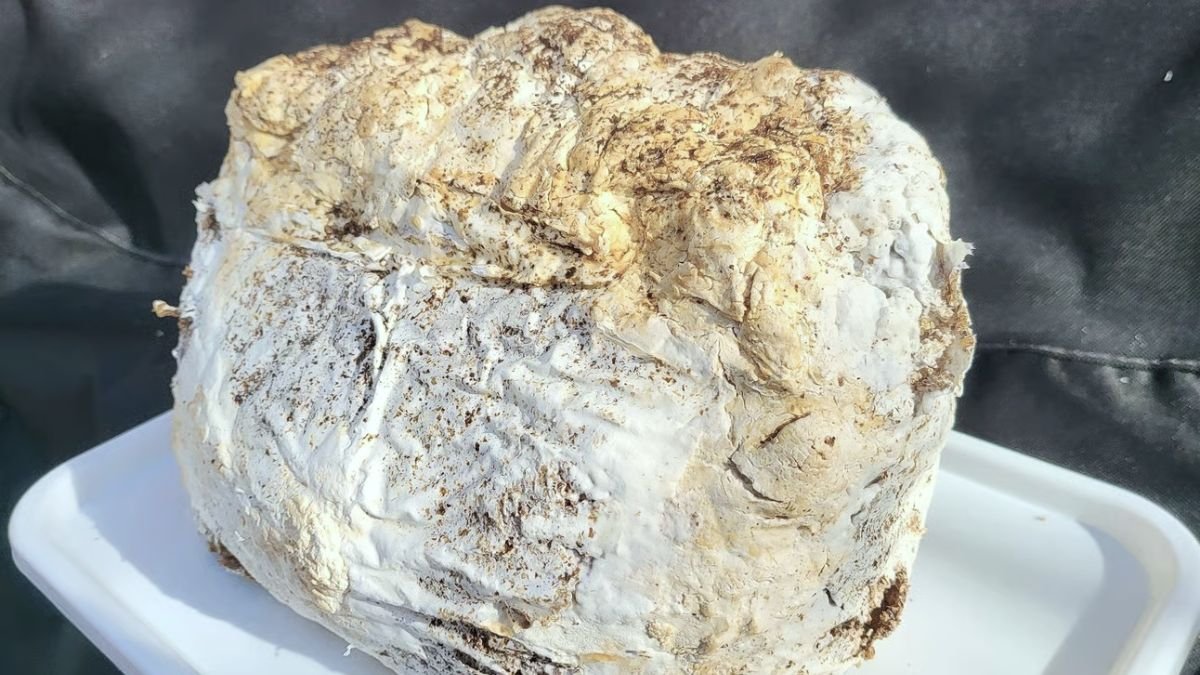Your cart is currently empty!

The Mycelial Afterparty: How Spent Mushroom Substrate Can Improve Soil Health
When Mushrooms Keep Giving: Using Spent Mushroom Substrate (SMS) to Revive Soil Health
Most people think a mushroom’s job ends once it’s picked, packaged, and sautéed in butter. But what if I told you the real magic starts after the harvest?
As a biology student, single mom, and full-time soil nerd, I’ve spent the last year getting my hands dirty in a project I never expected to fall in love with: researching spent mushroom substrate, or SMS. That’s the fancy term for the stuff mushroom growers toss after the mushrooms are done fruiting. Think straw, sawdust, coffee grounds, fungal threads; a funky, earthy, nutrient-rich mix that most folks overlook.
But what I’ve found is that this so-called waste might be one of the most powerful allies we have for healing our soil and rebuilding our relationship with the land.
This article isn’t just about compost. It’s about a mycelial afterparty. A second act for fungi that’s been hiding in plain sight. It’s about carbon, microbes, and the quiet brilliance of systems that don’t need to be reinvented, just rediscovered.
What is Spent Mushroom Substrate (SMS)?
Spent Mushroom Substrate (SMS) is what’s left behind after mushrooms have finished growing. If you’ve ever peeked into a fruiting chamber or mushroom bag, you’ve seen it; a dense, earthy mass of whatever the fungi were fed: straw, sawdust, coffee grounds, soybean hulls, coco coir, or even corn cobs. It’s mixed with mycelium (the root-like network that produces mushrooms) and often looks like compacted soil or mulch, but with a fungal twist.
Commercial mushroom farms produce tons of this stuff. literally. And once the mushrooms stop fruiting, the substrate is usually sent to a landfill, despite being full of life. It still contains enzymes, beneficial microbes, lignin-degrading fungi, and often more nutrients than the soil it’s dumped onto. In fact, depending on how many flushes were harvested, SMS can retain significant amounts of nitrogen, phosphorus, potassium (NPK), and organic carbon, which are the very building blocks of fertile soil.
The Problem: Depleted Soil and Agricultural Waste
Let’s talk dirty. Literally.
Over the past century, industrial agriculture has done a number on our soil. We’ve over-tilled it, over-fertilized it, and pumped it full of synthetic chemicals to force short-term yields. But soil isn’t just a growing medium it’s a living ecosystem. And right now, it’s exhausted.
Many U.S. soils have lost over 50% of their organic matter, which is the carbon-rich material that feeds microbes, retains moisture, and keeps nutrients cycling. Without it, we get dustbowls, runoff, and food that’s high in volume but low in vitality. Even compost, when used alone, often can’t make up for years of degradation.
Meanwhile, mushroom farms and other agro-industries are generating mountains of waste. For example, just two coffee processing plants near me toss out around 16,000 pounds of spent coffee grounds a day and that’s just coffee, (which could be repurposed into oyster growing blocks…but I digress.) Add mushroom farms to the mix, and we’re looking at millions of tons of SMS worldwide being discarded or underused.
Here’s the irony: while farmers spend big money on synthetic fertilizers, mushroom growers are tossing out a resource rich in nutrients and microbial life a resource that could literally revive the land. Without proper waste management specifically for SMS pick-up, mushroom farmers really don’t have a choice, but to throw out the SMS if their businesses profit is coming from the mushrooms.
That’s where my research comes in…


Leave a Reply